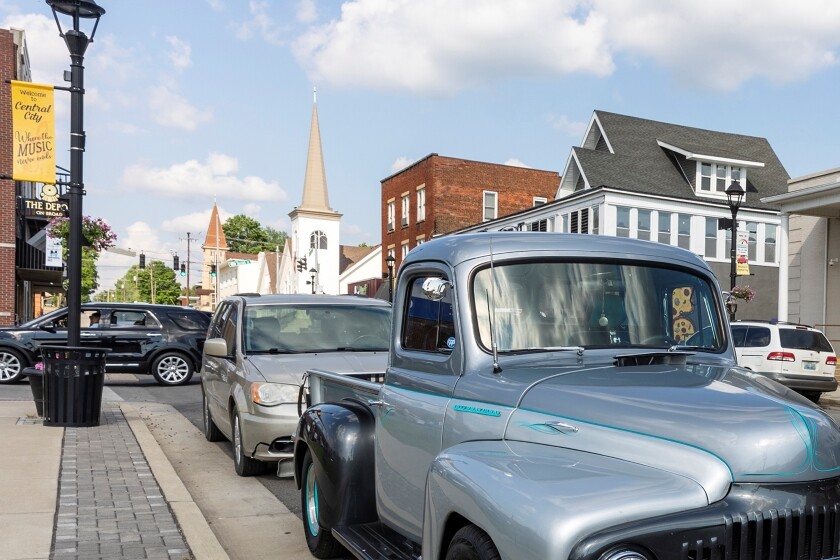I have lived most of my 82 years in rural Illinois, yet much of my work is in the city. I am an Amtrak regular. I quaff Modelo beers with my buddies in their seed corn caps at a tavern on the outskirts of my hometown and next day sip a nice sauvignon blanc with my associates at the Union League Club of Chicago. Never the twain shall meet.
The differences are, sure, wealth, income, education and family cohesiveness, but more important, expectations and aspirations — with much less of all these in rural Illinois than in metro Chicago.
Lawyers know where the wealth is — 87 percent of all Illinois lawyers practice in the six metropolitan Chicago counties, out of 102 counties in Illinois, according to the state Attorneys Registration and Disciplinary Commission.
As for family units, pundits talk about the broken family unit as an urban problem. Yet state public health agency reports show that nearly half of all births in 2020 in my rural home county of Stark were to unmarried women; in nearby Peoria County, it was 54 percent. This, versus slightly more than one-third of births to unmarried women in Cook County and one-fifth in suburban DuPage County.
A typical, successful double-income suburban or urban couple, together making, say, $200,000 — and often much more — generates 10 to 30 times more income per household than the typical rural single mother on government programs or in a low-income job. Somehow, it doesn’t seem quite fair to the single mother and her boyfriend, and they resent it. After all, her kids want the same sneakers as the youngsters in cities, and she would love a vacation on the beach in Mexico, as she sees upscale young families enjoying.
Somehow, the young single parent can’t blame herself for not studying harder in chemistry class, nor her mom or dad for not encouraging her to do so. So, she blames others, such as big-city dwellers. Donald Trump taps into this resentment in rural America with the powerful, nihilistic message “[Expletive] them all.”
Most small towns under a couple of thousand people, the warp and weft of 19th century America, have been slowly dying since I was a kid. Big-box stores in bigger cities did a number on Main Street businesses, leaving vacant storefronts. Health care consolidated, leaving little towns without their family doctor. Achievement in tiny schools fell far behind that of shiny, much better-funded suburban schools — all sharply diminishing the lure of a small town “of dear hearts and gentle people” to any upwardly mobile young couple.
When I was growing up in small-town America post-World War II, each little burg tended to have a small manufacturer, a banker, a couple of lawyers and Main Street businesspeople. Back then, their kids returned home after college to run the businesses and lead the town. No longer. The kids of any leading citizens go to college and never look back. Now they live in the ’burbs, maybe soon to be hunkered behind gated communities.
The natural leadership of small-town America has largely vamoosed. Indeed, today’s school superintendents and health care professionals who work in small towns often refuse to live there, commuting from a metro area like Peoria or Bloomington-Normal. More leadership potential foregone.
Don’t get me wrong. There are some delightful, lively small towns, but let the numbers do the talking. The population of rural America has declined from 36 percent of the nation’s total in 1950 to 14 percent in 2020.
A fundamental difference between small-town and urban America is the schools. The strongest correlate for school achievement scores has always been the level of education of a school’s parents — the higher the latter, the higher the former. With lower education levels in rural areas, small-town school districts tend to score below the state average and far below good suburban schools. Where would you want your kids to matriculate?
Government programs will never lift rural America out of its doldrums. Only the kindling of higher expectations and aspirations for one’s children will do the trick. Those who do well as a result may leave town for good. Yet maybe the electricity in a community that is striving hard to achieve will draw new families to the laid-back small-town lifestyle, some of whose kids may stay.
Fortunately, survey after survey going back to my graduate school days has shown that urban Illinois residents have quite positive attitudes toward their rural Illinois “cousins.”
Thus, urban leaders, the only ones who count, could benefit their country cousins with systematic programs to infuse small-town school leaders, parents and students with aspirations to achieve more in school. Then country and city mice would become more alike.
©2024 Chicago Tribune. Distributed by Tribune Content Agency, LLC. Jim Nowlan, a Republican, is a former Illinois legislator, state agency director and senior aide to three Illinois governors. He is a professor, small-town newspaper publisher and author, most recently, of Politics — The Starter Kit: How to Succeed in Politics and Government. He lives in Princeton, Ill.
Governing’s opinion columns reflect the views of their authors and not necessarily those of Governing’s editors or management.
Related Articles













